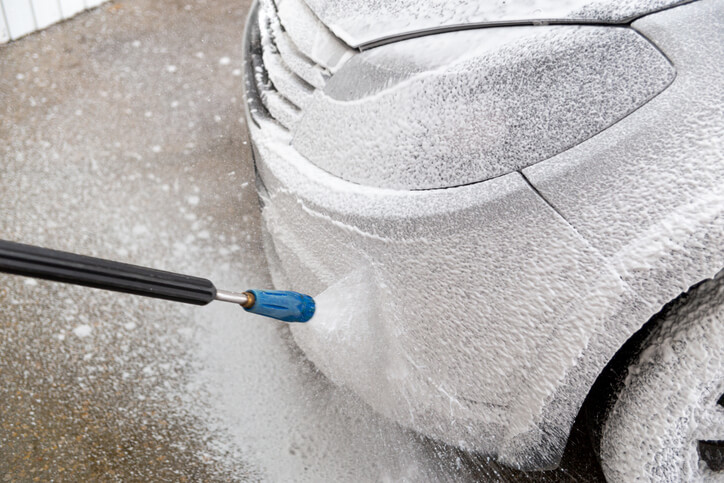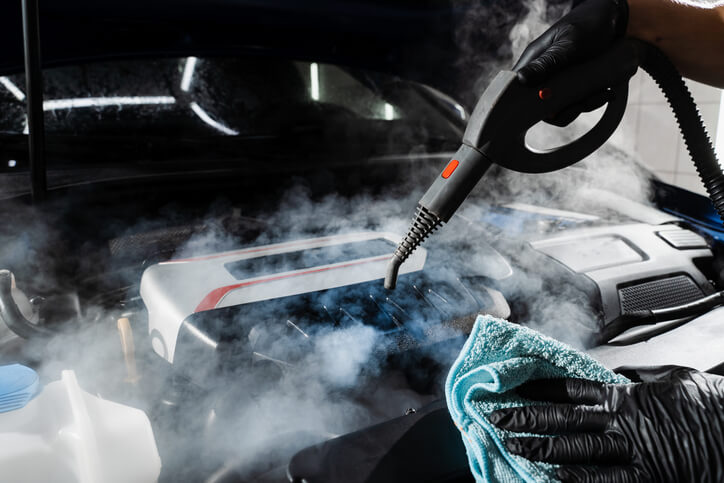Considering Auto Detailing Training? Discover Dry Ice Cleaning
Auto detailing is an intricate art that goes beyond washing and waxing vehicles. It involves a meticulous process of cleaning, restoring, and finishing the exterior and interior of a car to achieve a show-quality level of detail. As technology advances, so do the methods used in auto detailing.
One such innovative technique gaining popularity is dry ice cleaning. If you’re considering auto detailing training, understanding dry ice cleaning can set you apart from the competition. This blog explores what dry ice cleaning is, its benefits, and why it’s an essential skill for aspiring auto detailers.
What Is Dry Ice Cleaning?
Dry ice cleaning, also known as CO2 cleaning, is a revolutionary method that uses solid carbon dioxide (dry ice) pellets as a cleaning medium. As our auto detailing courses explain, the process involves blasting dry ice pellets at high speeds onto surfaces that need cleaning.
Upon impact, the dry ice pellets sublimate (transition directly from solid to gas) and lift dirt, grime, and contaminants off the surface without leaving any residue.
How Does Dry Ice Cleaning Work?
The effectiveness of dry ice cleaning lies in its three-fold action:
1. Kinetic Energy: The high-speed impact of the dry ice pellets physically dislodges dirt and contaminants.
2. Thermal Shock: The extreme cold of dry ice (-78.5°C) causes a thermal shock that makes the contaminants brittle, facilitating their removal.
3. Sublimation: The dry ice sublimates upon impact, transitioning from solid to gas, which expands and lifts away the loosened contaminants without leaving any secondary waste.

Benefits of Dry Ice Cleaning
Dry ice cleaning offers numerous advantages over traditional cleaning methods, making it an attractive option for auto detailers:
- Non-Abrasive: Unlike other methods that may scratch or damage surfaces, dry ice cleaning is non-abrasive and safe for delicate parts.
- Residue-Free: The sublimation process ensures no residue is left behind, eliminating the need for secondary cleanup.
- Environmentally Friendly: Dry ice cleaning is a green technology that doesn’t use harsh chemicals or produce hazardous waste.
- Effective on Hard-to-Reach Areas: The small size of dry ice pellets allows them to clean intricate parts and hard-to-reach areas effectively.
- – Reduces Downtime: The quick and efficient nature of dry ice cleaning reduces the time needed for detailing, enhancing productivity.
Why Learn Dry Ice Cleaning?
As a budding auto detailer in auto detailing training, learning dry ice cleaning can significantly enhance your skillset and marketability. Here’s why incorporating this technique into your training is beneficial:
- Advanced Technique: Mastering dry ice cleaning positions you as a knowledgeable and skilled professional in the auto detailing industry.
- Competitive Edge: Offering a cutting-edge service like dry ice cleaning can give you a competitive edge, attracting clients seeking the best care for their vehicles.
- Versatility: Dry ice cleaning can be used on various surfaces and parts of the car, from the engine bay to the interior, making you a versatile detailer.
- Efficiency: The efficiency of dry ice cleaning allows you to handle more jobs in less time, potentially increasing your income.

Practical Applications After Auto Detailing Training
Dry ice cleaning is highly versatile and can be applied to various aspects of auto detailing, including:
- Engine Bay Cleaning: Safely and effectively clean engine components without the risk of electrical damage.
- Interior Detailing: Remove stubborn stains and contaminants from upholstery, carpets, and hard surfaces.
- Underbody Cleaning: Clean the undercarriage of vehicles, removing grime and salt buildup that can lead to rust and corrosion.
- Paint Preparation: Prepare surfaces for paint correction and coatings by removing contaminants without damaging the paintwork.
Are you looking for an automotive school?
Contact ATC Toronto for more information.


